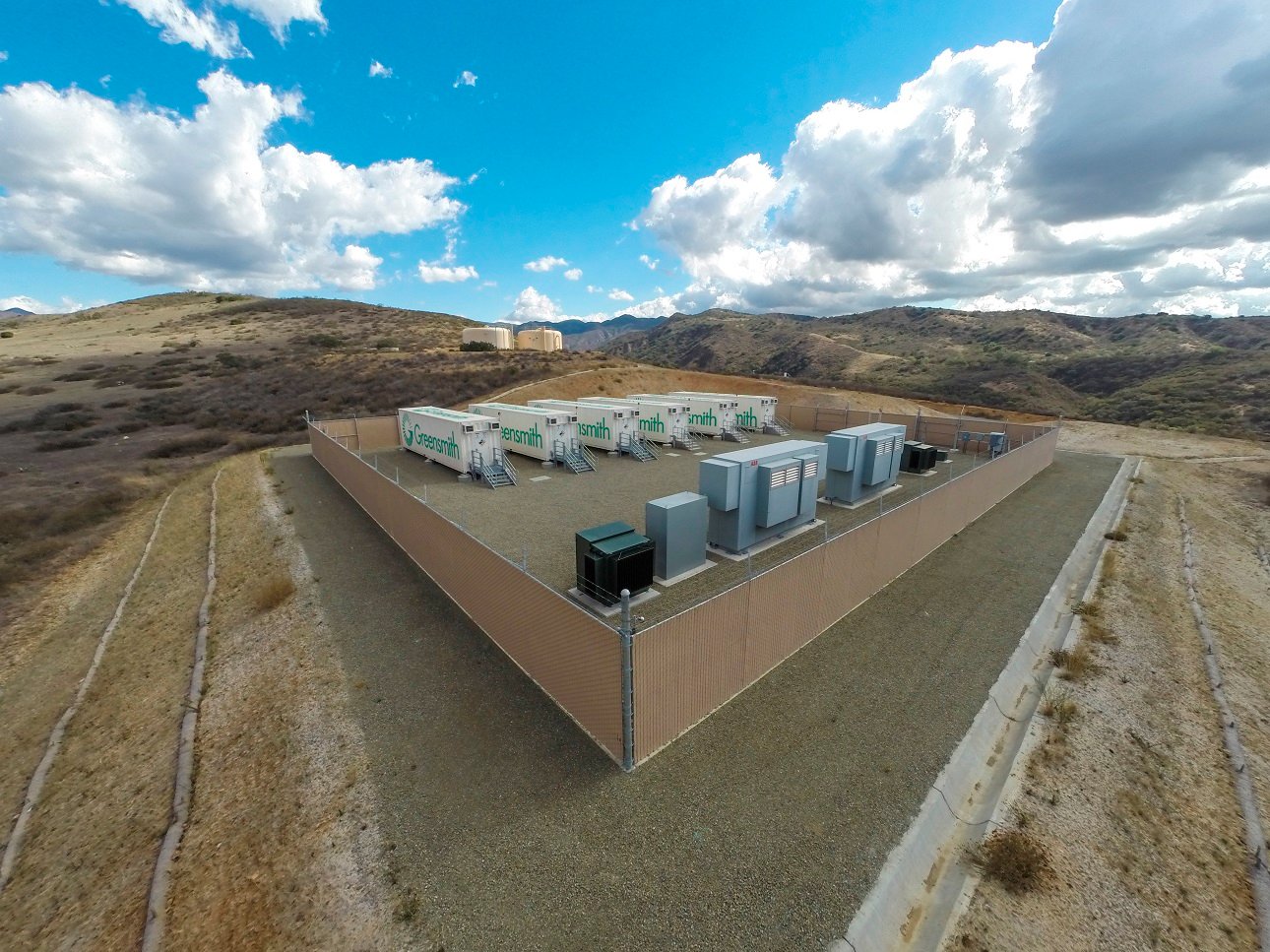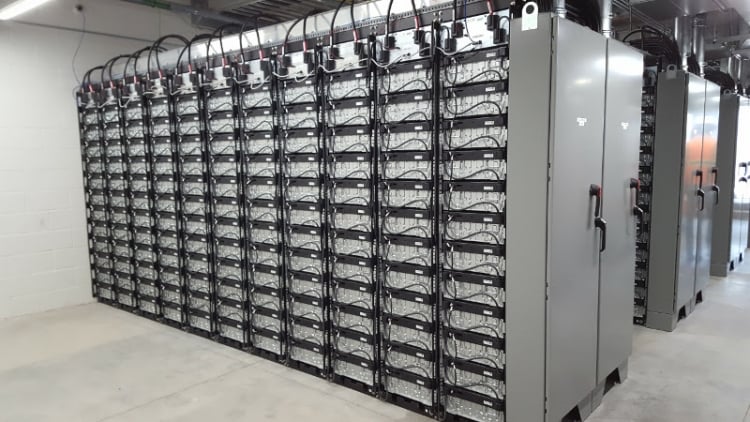
With over 180MW of energy storage projects under its belt, Greensmith Energy is beginning to be seen as one of the cornerstone players of the rapidly growing US – and global – market. Differentiating itself from the system integration competition through its sophisticated software offerings, which offer a wide number of use cases to improve ROI, the company also prides itself on rapid deployment and has remained strictly technology agnostic, working with a range of battery, inverter and other component suppliers to create customised solutions for its customers. We spoke with Greensmith president and CEO John Jung.
For years, energy storage has been approached on small or pilot project basis. Does the industry’s successful deployment of 80MW to meet Southern California’s recent gas shortage crisis signal a change in the maturity of the industry? What does it mean about how energy storage is perceived by utilities?
John Jung: Massive installations such as Aliso Canyon are proof that commercial, industrial, and utility-scale energy storage is feasible, trusted for managing challenging situations, and proven to be economically attractive. While regions that are new to storage may still start with pilot projects, there’s really no need to as the industry and technology are already proven to bring value and stability to the grid and its largest customers. Energy storage is no longer experimental; it’s a maturing, proven and valuable grid and behind-the-meter asset. I see Aliso Canyon as the beginning of widespread adoption of energy storage by utilities in North America.
Your 20MW/80MWh Aliso Canyon project for AltaGas was deployed in a record four months, a couple of months faster than any of the others. What enabled your team to deliver so quickly?
Try Premium for just $1
- Full premium access for the first month at only $1
- Converts to an annual rate after 30 days unless cancelled
- Cancel anytime during the trial period
Premium Benefits
- Expert industry analysis and interviews
- Digital access to PV Tech Power journal
- Exclusive event discounts
Or get the full Premium subscription right away
Or continue reading this article for free
AltaGas turned to Greensmith to design, deploy and commission a system, and we drew on our team’s track record of designing safe, flexible, software-driven energy storage systems. Our speed doesn’t come from using a cookie-cutter approach; in fact, it’s quite the opposite. While our integration methodology is tried and tested, each system is designed for the specific customer’s needs and modelled in detail so that its performance characteristics can be optimised before the first battery is installed. This up-front investment in design and modeling means that the implementation stage is very smooth and commissioning is seamless.
You have said that strong supply chain management skills are a critical success factor in energy storage projects: why is supply chain management so important and how is Greensmith’s approach different?
As a technology-neutral company, we are not tied to a specific cell or inverter manufacturer, but instead can optimize each system for the specific customer’s needs. The investment to do this is significant, as it means our software platform needs to be compatible with each supplier’s product range and that involves significant testing and modelling. To date, we have integrated products from 16 battery and 14 inverter suppliers. It’s more than a technical challenge; it’s also about ensuring that we can work together to supply the needed products when and where they are required and commit to service levels and quality standards. The resulting deep relationships mean we can draw on our supply chain to bring any project to fruition.
Some energy storage providers select a single partner for their battery chemistry, but you have worked with more than a dozen. Doesn’t that complicate the process? Why do you need so many partners?
It absolutely complicates the process, but we strongly believe that working with a broad range of battery suppliers and chemistries is worthwhile as it results in the best possible outcome for our customer, whether it is a utility looking for frequency regulation and backup or a large commercial client looking for peak shaving and demand response. With so many different use cases – and combinations of applications – it’s essential to be able to optimize the right components for a specific situation and each manufacturer’s products have difference characteristics, performance attributes, and price points.
How do you see the role of modular or standardized systems, such as your Omni4 offering, in the future of energy storage?
For smaller energy storage systems – say 1MW or smaller – there are economies of scale to be gained by using a more standardized approach. Our Omni4 product offers a simpler way to deploy highly sophisticated, software-driven energy storage. It’s a faster and more affordable way to access the benefits of energy storage, and the GEMS software platform ensures that the asset can offer multiple revenue streams to maximize the asset’s ROI.
California has been seen as a forerunner in US energy storage, since long before the Aliso Canyon leak. Do you now see technology and policy issues in other US states and global regions starting to catch up?
There are a few areas globally where energy storage is already sought out to solve market or technological challenges, such as Hawaii and Queensland, Australia, where the penetration of distributed energy resources has stressed the grid. In other areas, such as New York and Massachusetts, interest is driven by high electricity prices and demand charges combined with congested resources, making energy storage a good way to extend the capabilities of the existing grid. And finally, energy storage is gaining ground in other markets where policy issues are the primary influencer, whether it’s a statewide RPS like California or a policy impacting residential solar that is best solved with small-scale storage like Nevada.

Greensmith is known for focusing on developing sophisticated software solutions – can you explain briefly why software for energy storage systems is of such critical importance?
Energy storage is unlike any other grid asset. It can and must play different roles, from acting as capacity or load, to reacting quickly to fluctuations in the grid, and to patiently storing power for an unlikely blackout. For energy storage to play all those roles, and often several at once, it not only needs to be able to respond to the grid, but to respond to other grid assets, utility signals such as demand response, the weather, end customer demand profile, and more. It would be impossible for energy storage to be reliable, responsive, and flexible without extremely supple and sophisticated software and control algorithms.
Going forward, do you see Greensmith’s role as a software/hardware provider, system integrator, or a combination of roles?
Our vision for Greensmith is to be the world’s leading provider of both energy storage software and integration services. While our software platform is already one of the most widely used in the industry, it’s our technology neutrality that enables us to draw from the best Tier 1 suppliers to integrate the optimal system for a customer, whether in the commercial, industrial or utility space. We excel in both roles and see them as synergistic.
So far many systems in the US to date have been deployed for single, frequency regulation applications, but there appears to be a growing interest in ‘stacking’ applications and multiple revenue streams. Is this the case in your view and what challenges does it present for energy storage providers and integrators?
Stacking applications not only increases revenue but also provides the owner or operator with valuable services that stabilize the grid or their system. As we see it, all storage stems in the future will be expected to offer stacked applications, and be able to adapt to new uses as the market evolves. An example of this is the growing demand for retrofitting single purpose energy storage systems so that the asset can be more fully utilized. For example, we recently retrofitted a 2MW substation battery with our GEMS platform to enable participation in the PJM frequency regulation market. It takes experience and smart algorithms to optimize for the primary use case and enable multiple applications, but it is a challenge we are already meeting.
Is it becoming easier to calculate and explain the cost and value of energy storage to customers, and what are some of the key metrics?
Understanding the costs is relatively easy, but it takes more work to help customers truly understand the value of an energy storage system. Modelling helps, and our ability to model not only performance, but also the financial performance helps us illustrate the value to the developer or owner. The key metrics are not only Return on Investment (ROI) and Net Present Value of future cash flow (NPV) but also system uptime, warrantied cycles and depth of discharge.
Download this free white paper to learn more about Greensmith Energy’s three point plan to develop the electricity grid of the future.
